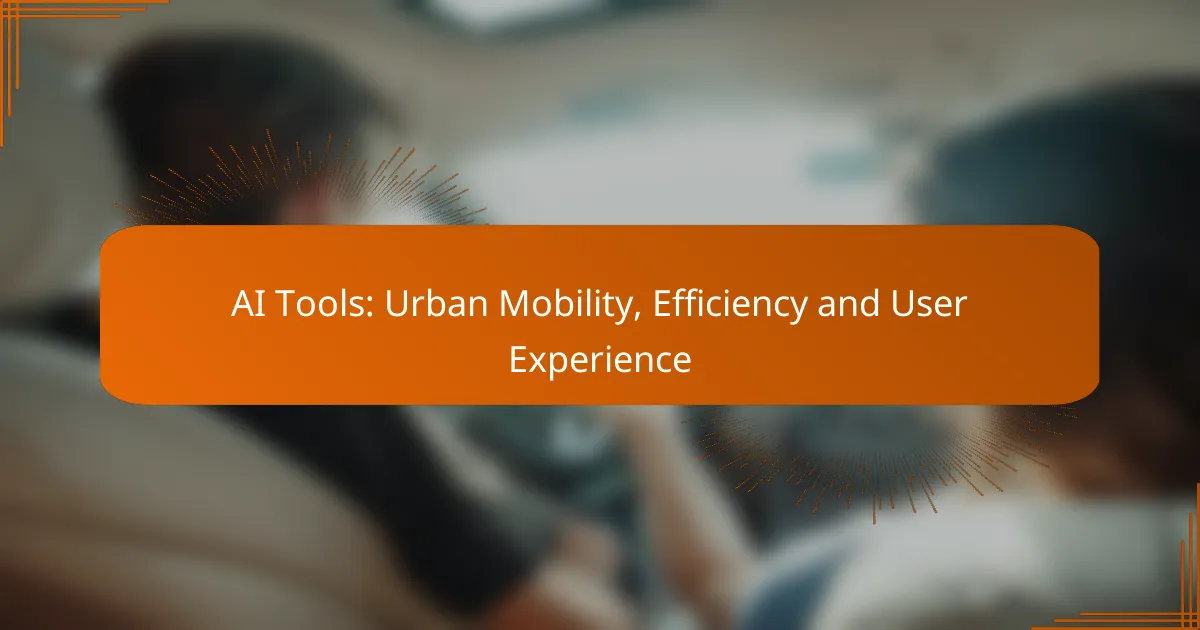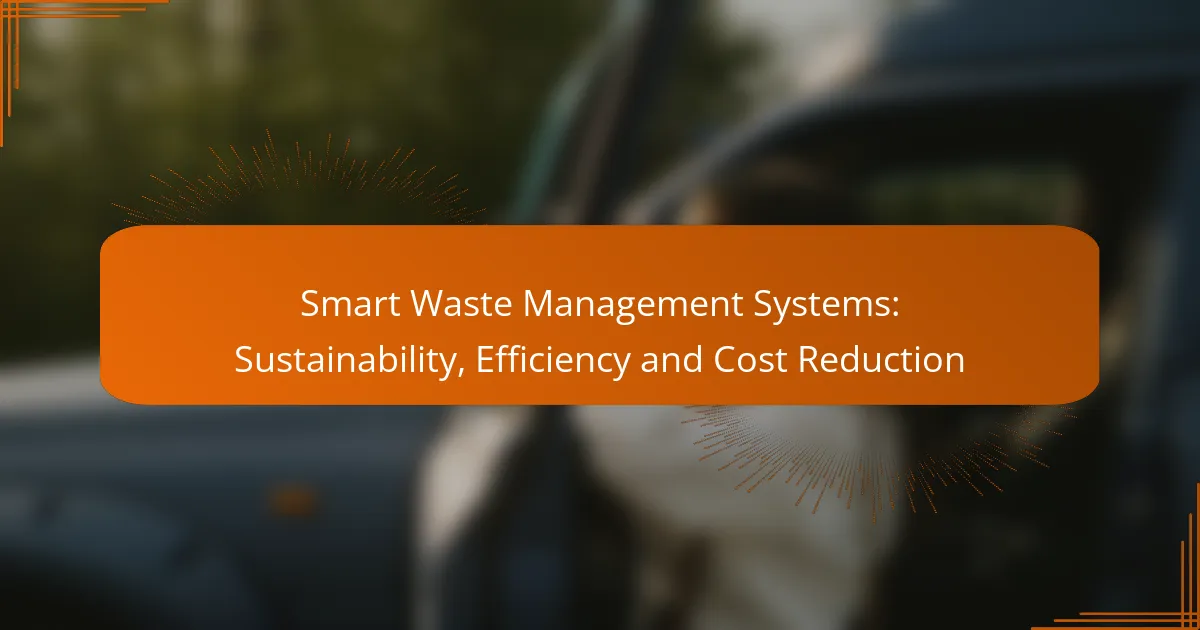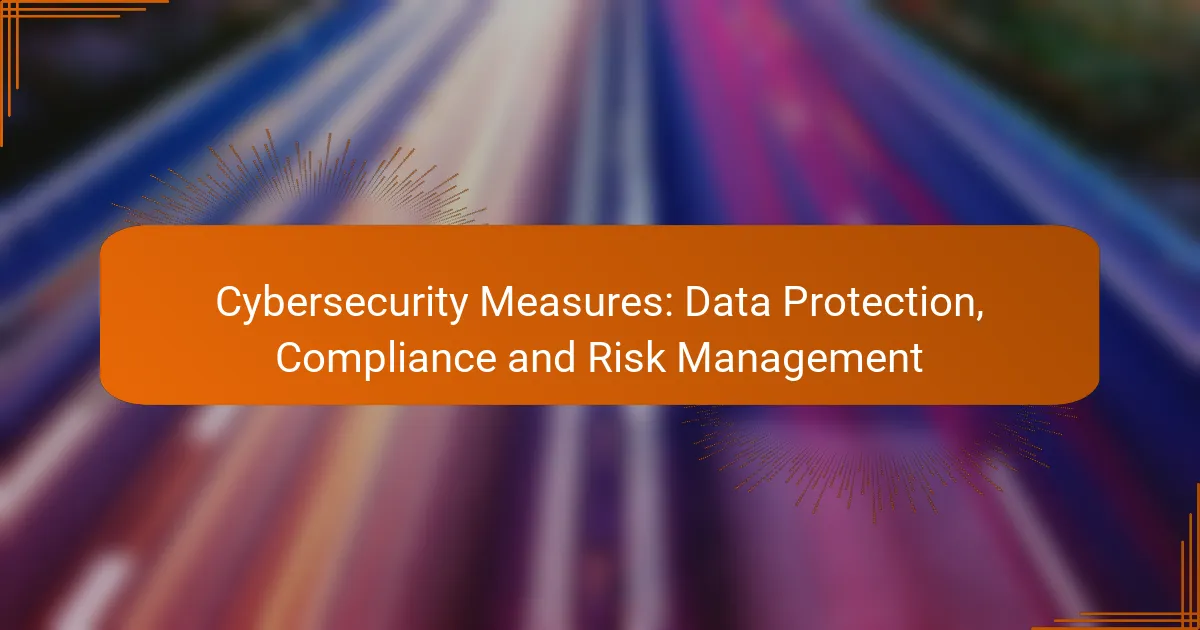AI tools are revolutionizing urban mobility by optimizing traffic flow, enhancing public transport efficiency, and improving user experiences. By utilizing real-time data, these technologies enable smarter transportation systems that cater to the needs of both users and city planners, paving the way for more sustainable urban environments.
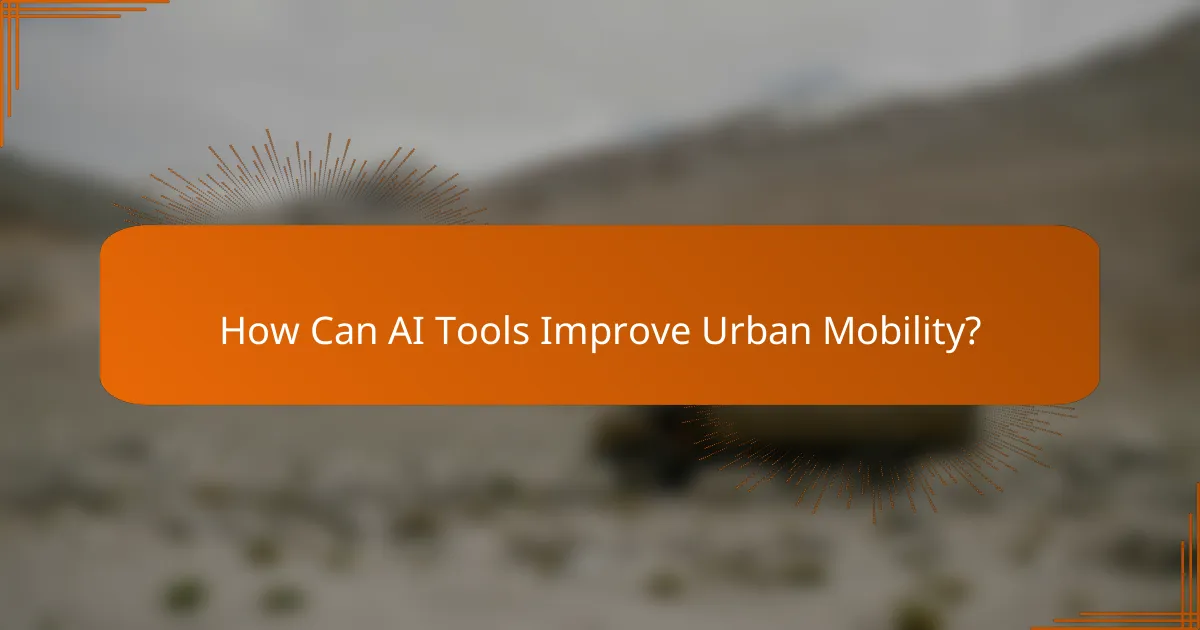
How Can AI Tools Improve Urban Mobility?
AI tools can significantly enhance urban mobility by streamlining traffic flow, improving public transport efficiency, and optimizing parking solutions. These technologies leverage real-time data to create smarter, more responsive transportation systems that benefit users and city planners alike.
Traffic management optimization
AI-driven traffic management systems analyze real-time data from various sources, such as cameras and sensors, to optimize traffic signals and reduce congestion. By adjusting signal timings based on current traffic conditions, these systems can decrease wait times and improve overall traffic flow.
For example, cities can implement adaptive traffic signals that change in response to the volume of vehicles, leading to smoother commutes and less idling. This not only enhances mobility but also reduces emissions, contributing to a cleaner urban environment.
Real-time public transport updates
AI tools provide real-time updates for public transport systems, allowing users to receive accurate information about arrival times and service disruptions. By analyzing data from GPS and user reports, these systems can inform passengers of delays and suggest alternative routes.
For instance, an app might notify users of a bus delay and recommend a nearby train as a faster option. This proactive communication improves user experience and encourages more people to utilize public transport, reducing reliance on personal vehicles.
Smart parking solutions
AI can enhance parking efficiency through smart parking solutions that guide drivers to available spaces. By using sensors and mobile apps, these systems can provide real-time information on parking availability, reducing the time spent searching for a spot.
Some cities have implemented dynamic pricing models that adjust parking fees based on demand, encouraging turnover and maximizing space utilization. This approach not only helps drivers but also generates revenue for municipalities.
Route planning assistance
AI-powered route planning tools help users find the most efficient paths for their journeys, considering factors like traffic conditions, public transport schedules, and even weather. These tools can suggest alternative routes to avoid congestion or delays.
For example, a navigation app might recommend a scenic route during peak hours to minimize travel time. By providing personalized recommendations, these tools enhance the overall travel experience and encourage the use of various transport modes.
Data-driven urban planning
AI tools enable data-driven urban planning by analyzing transportation patterns and predicting future mobility needs. City planners can use this information to make informed decisions about infrastructure investments and public transport improvements.
For instance, analyzing data trends may reveal the need for additional bike lanes or expanded bus routes in high-demand areas. This proactive approach ensures that urban mobility systems evolve in line with community needs, fostering sustainable growth and accessibility.
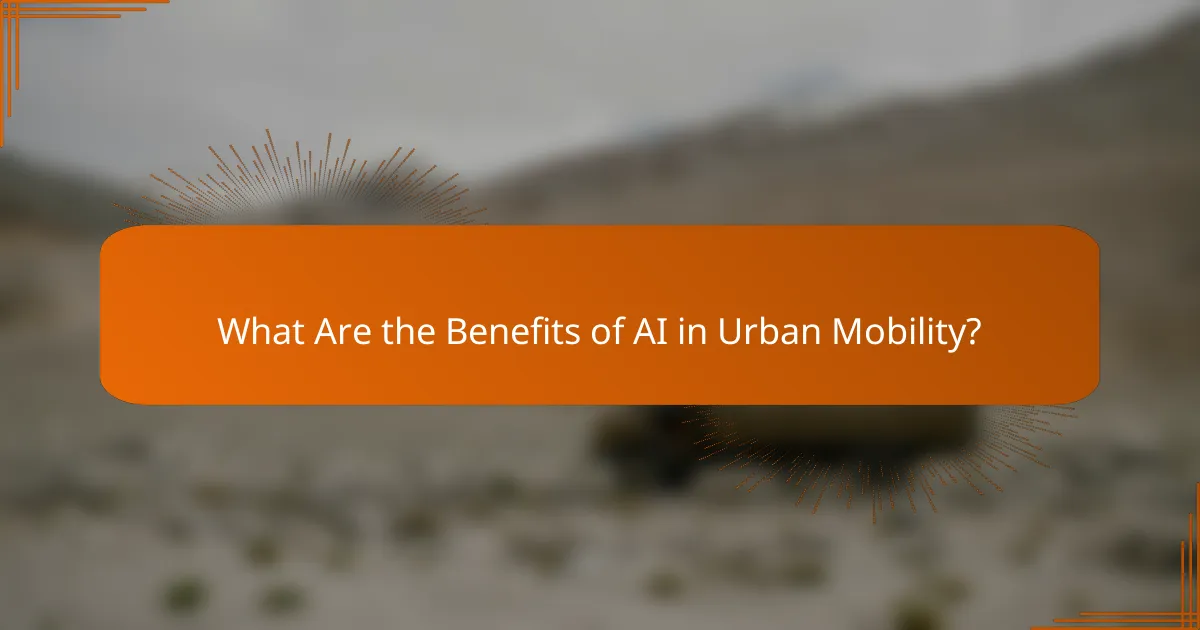
What Are the Benefits of AI in Urban Mobility?
AI enhances urban mobility by improving transportation efficiency, user experience, and environmental impact. These benefits lead to smarter city planning and a more sustainable future for urban areas.
Increased efficiency
AI technologies streamline urban mobility by optimizing traffic flow and public transportation schedules. For instance, AI algorithms analyze real-time data to adjust traffic signals, reducing wait times and improving vehicle throughput.
Additionally, AI can predict peak travel times, allowing transit authorities to allocate resources more effectively. This results in shorter travel times and better service reliability for commuters.
Enhanced user experience
AI significantly improves the user experience in urban mobility by personalizing travel options and providing real-time updates. Apps powered by AI can suggest the fastest routes based on current traffic conditions and user preferences.
Moreover, features like predictive maintenance for vehicles ensure that public transport systems operate smoothly, minimizing disruptions for users. This leads to higher satisfaction and increased usage of public transport services.
Reduced congestion
AI contributes to reduced congestion by managing traffic patterns and encouraging the use of alternative transport modes. Smart traffic management systems can reroute vehicles during peak hours, alleviating bottlenecks in busy areas.
Furthermore, AI can promote carpooling and ride-sharing services, which decreases the number of vehicles on the road. This not only eases congestion but also fosters a sense of community among users.
Lower emissions
AI helps lower emissions in urban environments by optimizing routes and promoting electric vehicles. By reducing idle times and improving fuel efficiency, AI-driven systems can significantly cut greenhouse gas emissions from transportation.
Additionally, cities can use AI to monitor air quality and implement policies that encourage sustainable transport options, such as biking and walking. This proactive approach contributes to healthier urban living conditions.
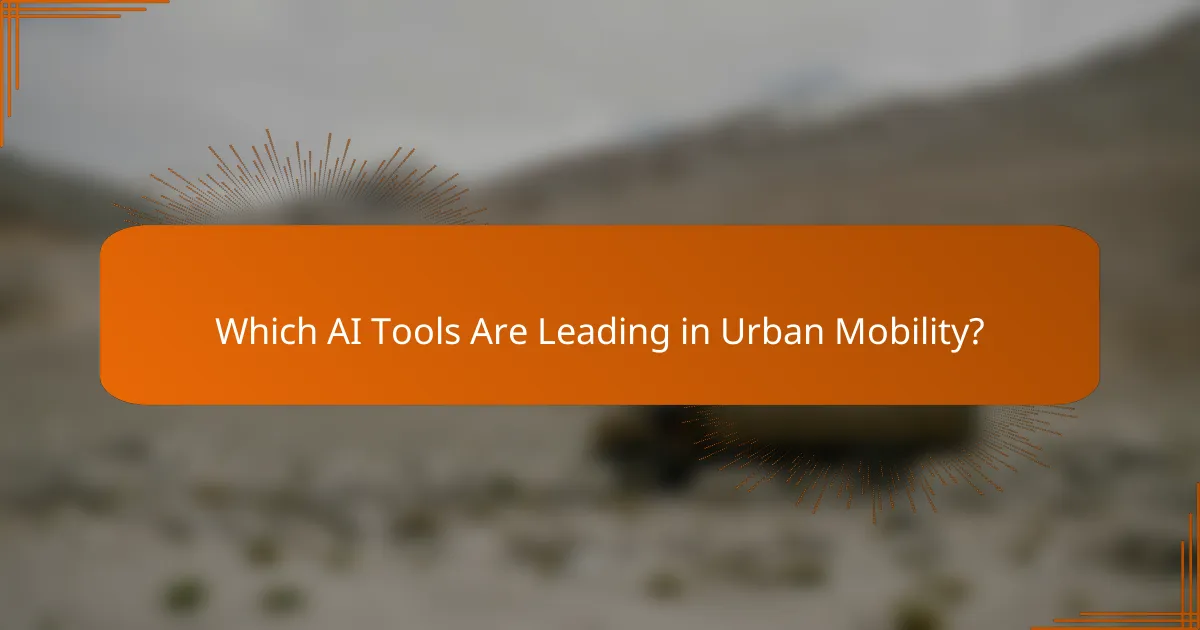
Which AI Tools Are Leading in Urban Mobility?
Several AI tools are transforming urban mobility by enhancing efficiency and user experience. Leading solutions include autonomous vehicle technology, smart navigation apps, real-time traffic management, and intelligent parking systems.
Waymo for autonomous vehicles
Waymo is at the forefront of autonomous vehicle technology, offering self-driving cars that navigate urban environments with minimal human intervention. The system uses a combination of sensors, cameras, and advanced algorithms to interpret surroundings and make driving decisions.
When considering Waymo, users should note the availability of services in select cities, primarily in the United States. It’s crucial to understand local regulations regarding autonomous vehicles, as these can affect service accessibility and operational hours.
Citymapper for transit navigation
Citymapper is a powerful app that helps users navigate public transportation systems efficiently. It integrates real-time data from various transit services, providing users with optimal routes, estimated travel times, and alternative options.
For effective use, users should input their destination and preferred mode of transport. Citymapper also offers features like disruption alerts and nearby transit options, making it a valuable tool for urban commuters. Availability may vary by city, so checking local support is advisable.
Waze for real-time traffic
Waze is a community-driven navigation app that provides real-time traffic updates and route optimization. By leveraging user-reported data, Waze can suggest alternative routes to avoid congestion and delays.
To maximize Waze’s effectiveness, users should enable location services and share traffic incidents. The app is particularly useful during peak hours or in unfamiliar areas, but users should remain aware of potential inaccuracies in user-reported data.
ParkMobile for smart parking
ParkMobile simplifies the parking process by allowing users to find and pay for parking spots via a mobile app. The platform provides real-time availability information and enables cashless transactions, enhancing the overall parking experience.
Users should create an account and link a payment method to get started. It’s beneficial to check for participating locations in advance, as not all areas may support ParkMobile. Additionally, be mindful of local parking regulations to avoid fines.
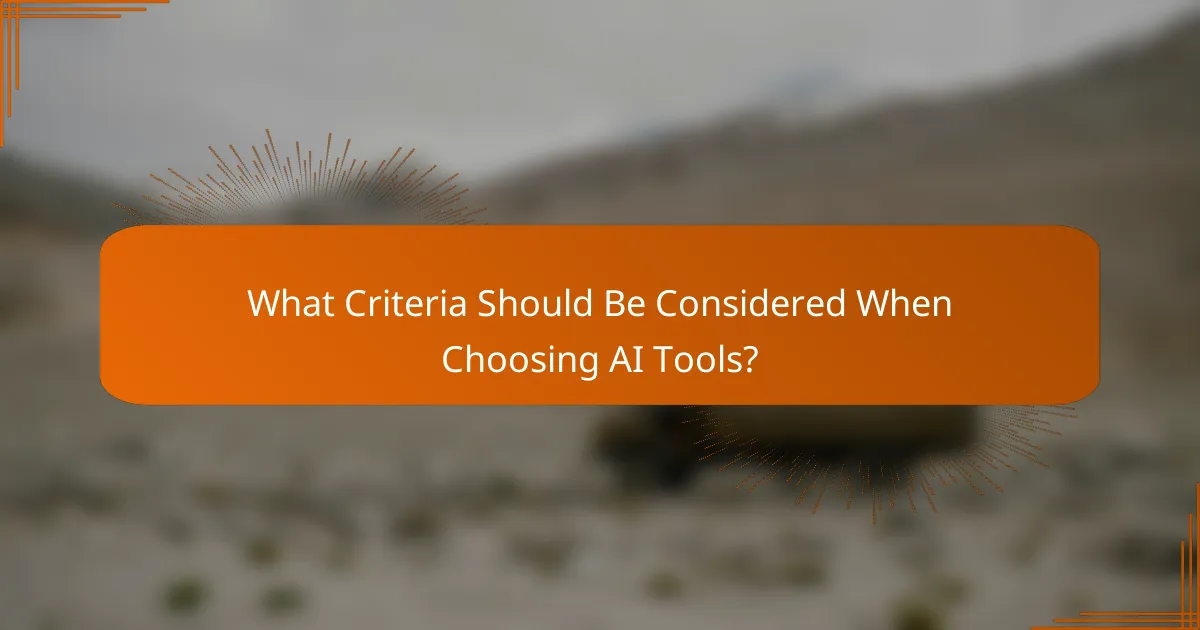
What Criteria Should Be Considered When Choosing AI Tools?
When selecting AI tools for urban mobility, efficiency, and user experience, consider integration capabilities, user interface design, and scalability. These factors will significantly impact how well the tools function within existing systems and how users interact with them.
Integration capabilities
Integration capabilities refer to how well an AI tool can connect with other systems and platforms. A tool that easily integrates with existing transportation management systems, data sources, and user applications will streamline operations and enhance data sharing.
Look for tools that support common APIs and data formats, as this will facilitate smoother integration. For instance, a mobility platform that can connect with GPS systems, payment gateways, and traffic management software will provide a more cohesive user experience.
User interface design
User interface design is crucial for ensuring that users can effectively interact with AI tools. A well-designed interface should be intuitive, making it easy for users to navigate and access features without extensive training.
Consider tools that prioritize user experience with clear layouts, responsive design, and accessible features. For example, an app that allows users to quickly find routes, view real-time traffic updates, and make payments will likely see higher adoption rates.
